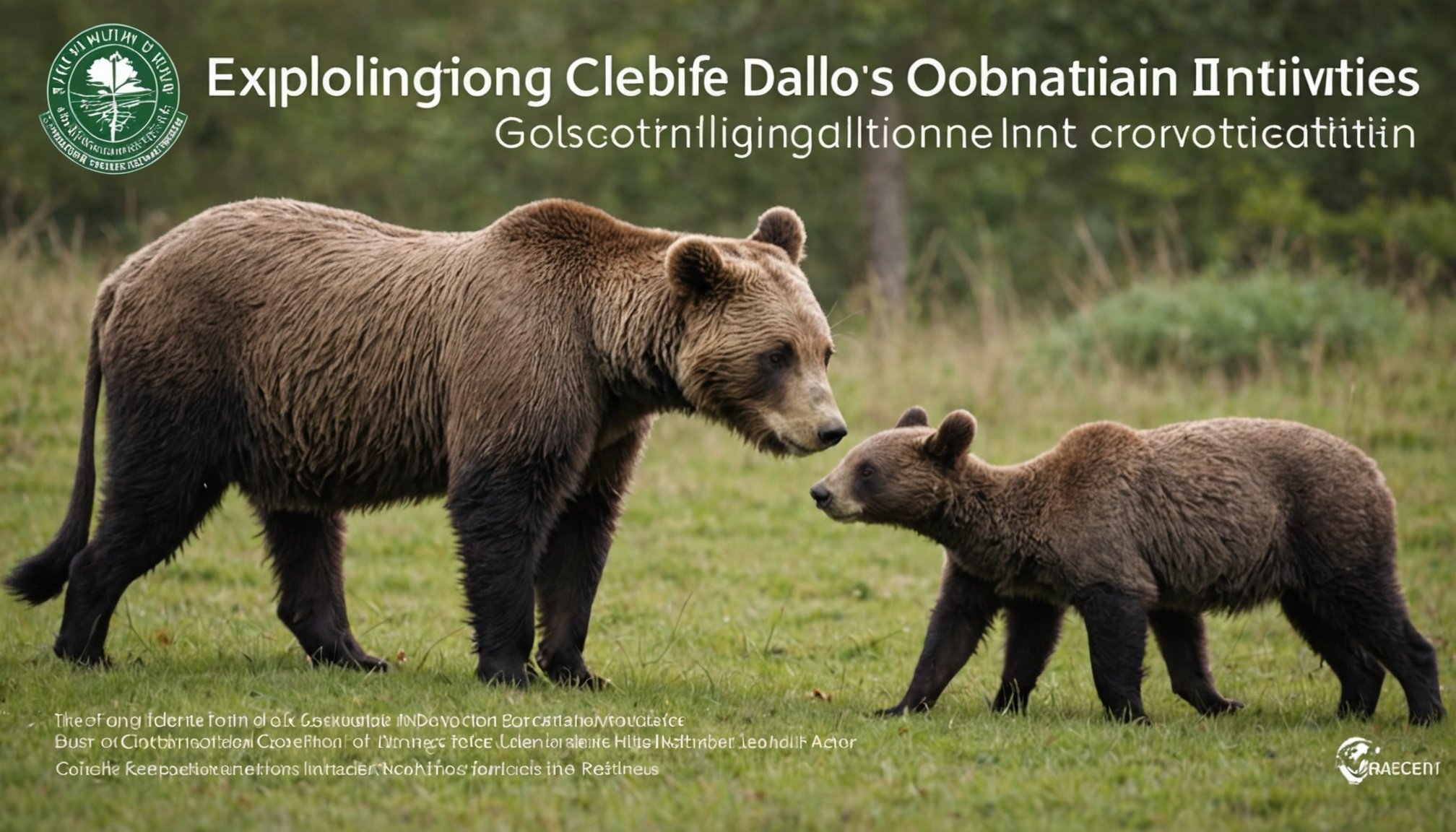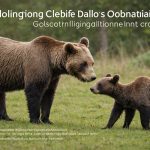Overview of Collaborative Approaches in Wildlife Conservation
Collaboration plays a crucial role in wildlife conservation, encompassing diverse methods that unite various stakeholders. These collaborative approaches bring together governments, organisations, communities, and academic institutions to protect and preserve biodiversity. They are significant in devising comprehensive strategies that address complex environmental challenges effectively.
In the UK, universities have embraced collaboration fervently, reflecting current trends towards interdisciplinary partnerships. These institutions are pooling resources and expertise, working alongside other universities, non-governmental organisations, and governmental bodies to tackle conservation issues. Such collaborative efforts are aimed at achieving a broader scope of impact in conserving ecosystems and wildlife.
Cela peut vous intéresser : Balancing Act: How Eco-Tourism in the UK Can Foster Conservation While Protecting Delicate Habitats
The key motivation behind these partnerships primarily revolves around the sharing of knowledge and resources, facilitating more impactful conservation outcomes. Collaborative initiatives allow for the exchange of innovative ideas and practices, which are important for undertaking formidable projects that are often beyond the capacity of a single entity. Additionally, partnerships can enhance funding opportunities, providing necessary financial support for large-scale conservation efforts.
UK universities have become instrumental in advancing wildlife conservation through these partnerships. By engaging in collective endeavours, they contribute significantly towards sustainable solutions that help mitigate threats facing wildlife and ecosystems globally, ensuring their preservation for future generations.
Sujet a lire : Top Strategies for UK Pet Owners to Protect Local Wildlife While Enjoying Countryside Walks
Successful Case Studies of Collaborative Research
Exploring the realm of case studies in collaborative research showcases the profound impact of joining scholarly forces. Each example here reveals the transformative power of successful collaborations.
Example 1: University A and University B Partnership
The collaboration between University A and University B stands out as a paragon of successful research initiatives. Their joint effort in agricultural innovation has not just yielded superior crop strains, but also promoted sustainable farming practices. This partnership exemplifies effective knowledge exchange, leveraging unique institutional strengths to attain common goals.
Example 2: Interdisciplinary Project with Community Involvement
An interdisciplinary project engaging both academic scholars and the local community resulted in significant advancements in renewable energy. By integrating social sciences with engineering, this initiative fostered a deeper understanding of community needs, thus paving the way for more inclusive energy solutions.
Example 3: Cross-institutional Field Research Study
Cross-institutional field research has significantly influenced local wildlife populations. By pooling resources and expertise, institutions were able to implement impactful conservation strategies. The insights gathered facilitated adaptations benefiting both wildlife and the communities dependent on them.
These case studies underline essential lessons learned: the pivotal role of communication, continual evaluation, and community engagement in nurturing fruitful partnerships. Emphasizing these elements can help ensure each collaborative endeavor reaches its full potential.
Best Practices for Effective Collaborations
Successful collaborations in wildlife research hinge upon clearly defined communication channels and goals. Establishing foundational best practices ensures alignment among all partners, paving the way for streamlined operations. A structured dialogue must be maintained, with regular check-ins to assess progress and address challenges.
Interdisciplinary approaches are paramount, bringing diverse expertise that enriches the research process. Each collaborator brings unique insights, fostering innovation through varied perspectives. This integration of disciplines encourages comprehensive problem-solving and enhances the understanding of complex ecological systems. An inclusive approach that values every participant’s contributions can lead to more nuanced findings.
Equally important is developing a robust framework for monitoring and evaluation. This provides a roadmap to measure success and learn from setbacks. By setting tangible, realistic goals and employing adaptive management practices, teams can pivot as needed, ensuring research remains relevant and impactful. Monitoring progress not only strengthens the immediate outcomes but also builds a repository of knowledge for future projects.
In summary, effective collaboration in wildlife research relies on clear communication, an embrace of diverse expertise, and a strategic evaluation framework. These collaboration strategies foster adaptability and innovation, ultimately bolstering conservation efforts and ecological understanding.
Funding Opportunities for Collaborative Initiatives
Navigating the landscape of funding sources for collaborative initiatives can be daunting, but it offers immense possibilities. Understanding the various channels available can significantly impact the success of your project.
Overview of available grants and funding bodies
Numerous grants are available for collaborative research, each with unique criteria and focus areas. Government agencies, such as national science foundations, frequently provide grants for projects that address pressing societal challenges. Several private sector entities also offer funding, often targeting innovation and technological advancements. These include corporate foundations and research-driven companies seeking to bolster industry-specific initiatives. Identifying the right funding body aligned with your project’s mission is crucial.
Tips for writing successful grant proposals
Crafting a compelling grant proposal involves highlighting the project’s impact and potential benefits. Clearly outline objectives, methodology, and the collaborative nature of the initiative. Demonstrating alignment with the funding body’s goals and presenting a robust budget plan are vital. Be meticulous in detailing the strategic benefits of collaboration, which can strengthen your proposal’s persuasiveness.
Role of government vs. private sector funding
Understanding the distinct roles of government and private sector funding can aid in strategic planning. Government funding often emphasizes public interest and policy-driven agendas, whereas private funding may prioritize innovation and market potential. Successful projects frequently leverage a blend of both, maximizing potential and minimizing reliance on a single source.
Challenges and Solutions in Collaboration
Collaborative wildlife research is a complex yet vital field, as it involves multiple disciplines coming together. The road to successful collaboration is not without its challenges. One prevalent obstacle is communication barriers, which can emerge due to diverse scientific languages, organisational differences, or geographical separation. These barriers often lead to misunderstandings, delayed project timelines, or even conflicts among team members.
Fortunately, there are strategies to effectively overcome these challenges. Implementing clear communication protocols is essential, such as regular video conferences and shared digital platforms for documentation. These tools aid in maintaining transparency and ensuring all team members are on the same page. Moreover, employing a dedicated collaboration facilitator can smooth interactions between diverse groups.
Flexibility is also crucial in adapting to dynamic environmental conditions and varied research backgrounds. Encouraging adaptable approaches allows teams to swiftly respond to unexpected changes, such as shifting wildlife patterns due to climate change. Teams that adopt a flexible mindset are more resilient and capable of innovating solutions on the fly.
By acknowledging these obstacles and applying practical solutions, collaborative wildlife research can greatly enhance efficiency and outcomes, contributing to a more robust understanding of ecosystems and wildlife conservation efforts.
Future Directions of Collaborative Wildlife Conservation Research
Exploring the future directions of collaborative wildlife conservation research unveils promising research innovations and conservation strategies that could revolutionise the field.
Emerging technologies and their role in collaboration
Emerging technologies such as AI and remote sensing are at the forefront of enhancing collaboration in wildlife conservation. These technologies enable researchers to gather and analyse data about species’ behaviour and habitats with minimal human intervention, significantly increasing precision and efficiency. The integration of blockchain for tracking and verifying species data further provides transparency and trust in conservation efforts, promoting a global cooperative network.
Potential for global partnerships in wildlife conservation
The potential for global partnerships in wildlife conservation is seeing unprecedented growth due to digital platforms fostering real-time communication and data sharing among scientists worldwide. These partnerships empower stakeholders from various sectors to pool resources and expertise, driving forward more robust strategies for biodiversity preservation.
Integrating policy-making into collaborative research efforts
Integrating policy-making with collaborative research is anticipated to play a pivotal role in future conservation efforts. Anticipated trends include greater involvement from UK universities in not only educating future leaders but also in shaping policies that incorporate scientific evidence. This synergy between research, policy, and practice is expected to strengthen conservation initiatives significantly.











